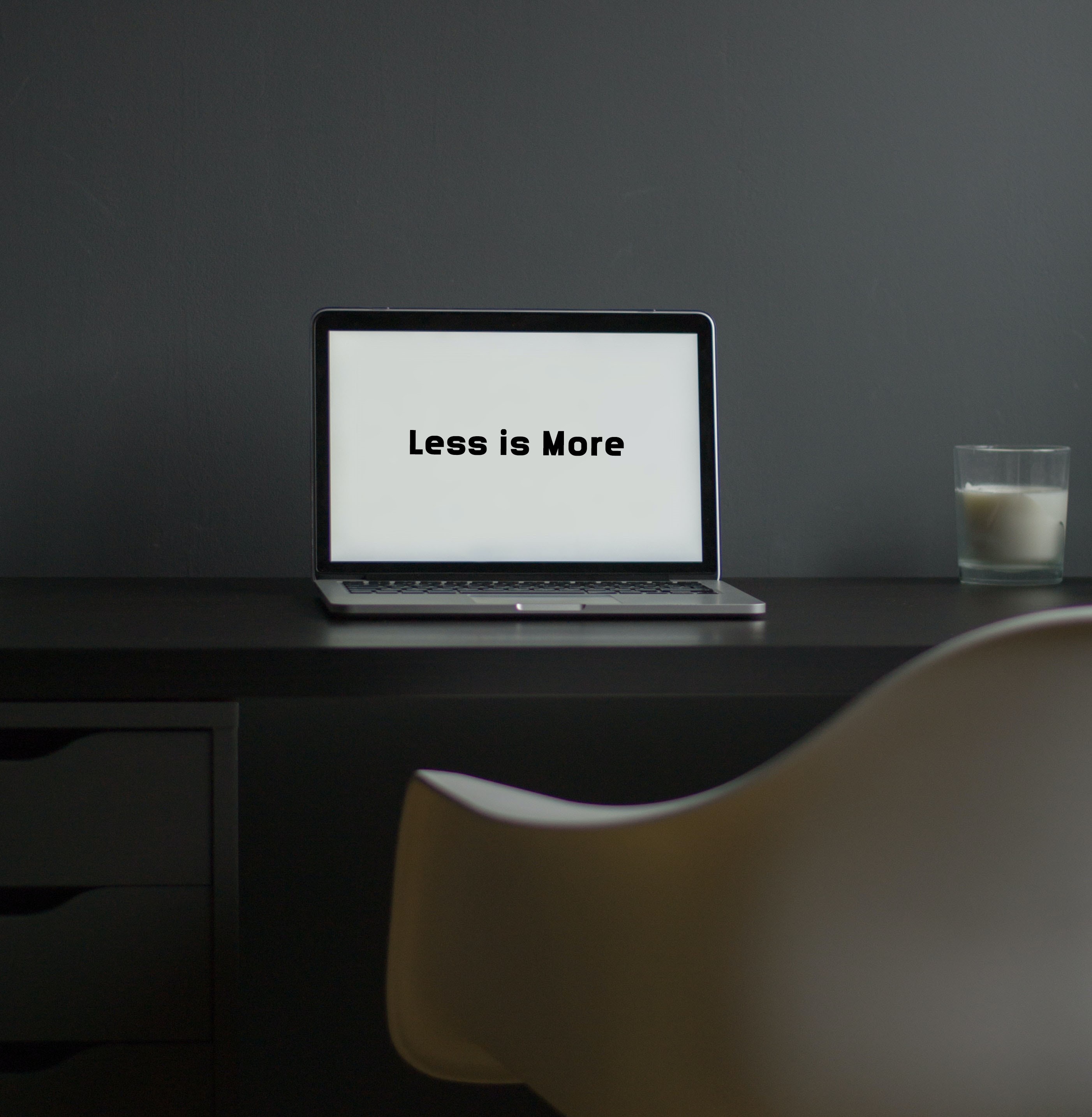Technology is a huge part of our everyday lives, and people are constantly swamped with information and visual stimuli. Because of this, it has become more critical than ever to create websites that are clean, well-organised, and easy to navigate.
Let’s take a look at minimalistic design standards and why designers use them.
The Power of Simplicity
“Less is more” is a powerful principle that can be applied in many situations, including graphic design, interior design, and even writing. The aim of simplicity is to achieve the core goals and message without extra “fluff”.
Minimalism in web design is about simplifying the user experience by eliminating unnecessary clutter such as excessive decorations or wordy descriptions, which can distract, confuse or overwhelm the user. By stripping away the non-essential, designers create a clean and elegant interface allowing users to focus on the core content and tasks.
Key Principles of Minimalistic Web Design
- Clean and simple layout: Minimalist websites often feature a spacious and uncluttered layout. The use of ample white or negative space helps create a sense of balance and visual hierarchy. This allows the critical elements to stand out and be easily digestible for users.
- Limited colour palette: Minimalist designs typically employ limited colours – often neutral or muted tones. By using only a few carefully-selected colours, designers can create a cohesive and harmonious visual experience. This simplicity also contributes to faster loading times and better accessibility.
- Typography: Minimalism emphasises the use of simple and legible typography. Clean and sans-serif fonts are commonly used to enhance readability and give a modern look. Large and bold headings draw attention to key information, while smaller font sizes provide a comfortable reading experience. Generally, using no more than two or three fonts throughout the website is also encouraged.
- Minimal use of images and graphics: In simplistic web design, images and graphics are used sparingly and purposefully. When images are utilised, they are typically high-quality, relevant, and serve a specific function. By avoiding unnecessary visuals, designers ensure that the focus remains on the content and functionality of the website.
Benefits of Minimalism in Web Design
- Improved user experience: Minimalistic designs make it easier for users to navigate and understand the website’s content. With fewer distractions, users can quickly find what they are looking for and complete their desired actions. The simplicity of the design also reduces cognitive load, making the overall experience more enjoyable and intuitive.
- Faster loading times: By reducing the number of elements and optimising the use of resources, minimalistic websites tend to load faster. This is crucial in today’s fast-paced world, where users expect instant access to information. It also contributes to better search engine rankings.
- Increased mobile responsiveness: Minimalistic design principles align well with responsive web design, making websites more adaptable to various screen sizes and devices. With the increasing use of smartphones and tablets for browsing the internet, a mobile-friendly website is essential. Minimalism ensures that the content remains clear and readable, regardless of the screen size.
- Enhanced branding and user engagement: A simple design helps establish a strong and memorable brand identity. When a website is visually consistent and presents information clearly and concisely, it instils confidence in the user and creates a positive impression of the brand. Users are more likely to engage with a website that is aesthetically pleasing and easy to use.
The art of minimalism in web design has become a powerful tool for creating user-friendly and visually appealing websites. By embracing simplicity and focusing on the essentials, designers can deliver a seamless user experience that allows effortless navigation and engagement with the website.
At Pathfind Media, we are all about applying the best, most effective and modern design principles to our websites. We love to see how our clients’ messages are well-communicated and how users enjoy the experience of engaging with our websites.
